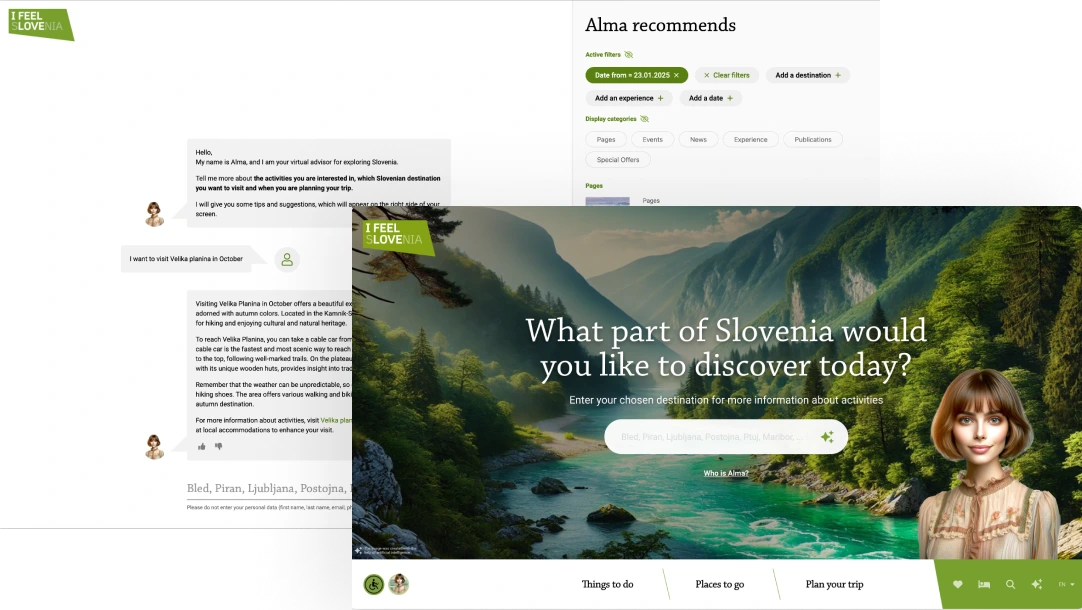A well-designed website can play a crucial role in influencing the visitor's decision-making process. So, how can we ensure that the site effectively fulfills its purpose?
How the site will perform is established in the earliest stages of the development process. Over the years, Creatim experts have developed a destination website discovery process (explained in this document), taking into account the various stakeholders typically involved in the design process: tourism bodies, influential service providers, government agencies, and NGOs, to name a few. The goal is to align everybody on the principles that will frame the future website.
This article examines how destination marketing organizations (DMOs) like yours can effectively conduct a discovery process to address the challenges of website redesign and avoid potential pitfalls early in the process.
Ok, but where to start?
Let me guide you through the process that will minimize your risks, align stakeholders, and establish a foundation for a successful production.
Step 1: Conduct Initial Workshops to Align Stakeholders
It is best to start with a series of workshops to discuss various challenges with the stakeholders and eventually agree on views, motives, and aspirations. So let’s kick off!
Kick-Off Meeting
- Introduce project objectives and expectations. When is the project deemed successful? Is it enough that the site is up and running, or are there specific KPIs in terms of engagement, SEO performance, or leads delivered (e.g., in the MICE segment)?
- Bring together project stakeholders to align on expectations, objectives, and the solution roadmap.
- Set project framework and team structure. Discuss accountabilities, development methodology, project management, and communication.
- Highlight areas requiring further research, such as user personas and site-specific challenges.
Project Overview and Due Diligence workshops
- Introduce the industry insights and data you already have, focusing on visitor trends, competitor performance, and digital strategies. Use these data to fine-tune project goals and key performance KPIs.
- Audit the current website and identify the biggest struggles in navigation, content relevance, technical performance (e.g., load speeds), or mobile responsiveness.
- Identify Missing Pieces: Evaluate the site's performance in terms of speed and search rankings. Pinpoint areas for improvement. If necessary, conduct a UX audit to identify gaps in the user experience.
- Discuss project management and communication strategies to ensure that dependencies don’t cause bottlenecks. A savvy project manager must know when to intervene to neutralize risks if unexpected issues or new requirements emerge.
Step 2: Develop User Personas and Flows
- Conduct User Research: Use qualitative and quantitative methods like surveys, interviews, and reviews of past user data to gather information about key audience groups.
- Segment Visitors: Categorize users based on demographics, motivations, behaviors, and preferences into distinct personas.
- Validate Personas: Match each persona with real-world scenarios and confirm their accuracy with stakeholders.
Step 3: Prioritize Accessibility, Mobile, and AI-driven Personalization
- Ensure Mobile Responsiveness: Test for quick load speeds, easy touch navigation, and intuitive mobile design.
- Implement AI-driven personalization. A destination portal attracts a diverse range of visitors, including families, adventure seekers, seniors, and MICE (Meetings, Incentives, Conferences, and Exhibitions) guests. Hence, discerning the visitor’s intent early in the session is critical. Here, a destination-specific chatbot comes into play. Such a bot should not merely provide answers; it should ask the right questions.
For example, Alma, the bot on the Slovenia.info national portal, requires just a short chat to establish the visitor’s profile and offer the most relevant content.
A Case Study: Alma, your virtual companion

Visitors expect destination chatbots to offer more than their general chatbots. Hence, destination chatbots must draw information from databases that are owned or managed by the tourist organization. Such a data model allows them to access information that is not easily found elsewhere on the web.
3. Accessibility Standards: A destination’s website serves as a virtual representation of the actual destination. If a site lacks accessibility, this impression can quickly extend to the actual location. Incorporating features such as keyboard navigation and screen reader compatibility is a must.
Enhancing Digital Accessibility in the Tourism Industry
Step 4: User-Centric Workshops
- Persona and Target Markets Workshop: Present the personas and discuss them with the team.
- User Journey Mapping and Personalization: Ensure the website provides personalized experiences that modern users expect. Discuss key journeys (e.g., researching a destination, booking a trip) and possible areas of frustration.
- UX Workshop: Brainstorm solutions to improve navigation, mobile-friendliness, accessibility, and the overall experience. Discuss competition and relevant case studies. Determine the website design principles, such as brand differentiation, data-driven design, and personalization strategies. Discuss the UX & visual design process.
Step 5: Content Management Workshop
According to our experience, the content is by far the biggest challenge in such projects. Not just for the sheer volume of content required, but also because it must be appealing, relevant (personalized), adequately structured, optimized, placed, and translated. To handle the content, you need to:
- Establish the site’s governance and editorial workflows.
- Discuss editorial standards on content quality, linking, advertising, social media, and other procedures needed to ensure coherence. How these policies are shaped profoundly affects the site concept, so they must be addressed in the discovery phase.
- Audit existing content and identify what needs to be created, updated, or removed.
- Establish a media management platform to track who and when contributed, used, or published content. Tools such as Credo Asset Manager enable content producers to upload media files that can be applied to the website or used by journalists, tour operators, and partners (such as hotels and attractions), while ensuring copyright protection.
- Focus on Multilingual Needs: Ensure your team can handle content for international audiences, including translations and localization.
- CMS requirements: A Destination website requires a distinctive set of functionalities. Aim for a tourism-specific CMS that streamlines marketing, business, and operational processes while meeting the highest security standards.
Step 6: Functions and Components workshop
- Core Functionality Mapping: Identify essential website architecture (what to do, what to see, accommodation, MICE, etc.)
- System Architecture Design: Map out the technical foundation and infrastructure requirements
- Content delivery: Leverage a Content Delivery Network (CDN) to ensure swift global content delivery, preventing rich media from becoming a bottleneck and compromising speed and performance.
- API Integration: Identify all third-party systems requiring integration.
- Security and Compliance: Implement security measures to safeguard visitors’ data (e-newsletters, lead generation) and ensure the application remains invulnerable to hacker attacks. Ensure compliance with regulations and legislation (GDPR, WCAG, etc.)
Step 7: Compile Documentation and Secure Stakeholder Approval
- Solution Outline Document: Consolidate findings from workshops, research, and analysis into a detailed document.
- Highlight Key Elements: Include personas, user journeys, SEO strategy, content plan, technical requirements, and design principles.
- Review with Stakeholders: Share the document for feedback and ensure alignment before moving into design and development.
Once signed off, the Solution Outline document will provide a reference for the UX and development teams. It will unify the perceptions of project stakeholders and help the development team maintain focus when faced with challenges, scope changes, and the onboarding of new team members.
However, the results of the discovery phase should not be carved in stone. In light of new facts that may emerge during the subsequent stages, the documentation may be revised. However, it is wise to establish a formal procedure for making any significant changes to the document, thereby avoiding extensive project creep and maintaining a solution-focused approach.
Building Your Destination's Future
Are you dealing with declining website traffic and rapidly evolving traveler expectations? Creatim can help you by conducting a discovery process to remove uncertainties, align stakeholders, and set you on a path of success.
Contact us today to begin your website transformation


